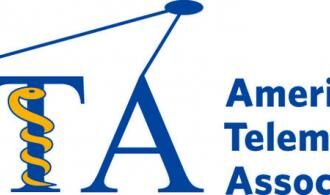When the FCC finally agreed to start spending the money appropriated for the expansion of broadband, the entire telemedicine industry greeted the news.
When the FCC finally agreed to start spending the money appropriated for the expansion of broadband, the entire telemedicine industry greeted the news.
Now, however, we’re getting to the “small print,” and what we’re seeing are some important aspects that were overlooked in the initial excitement and what they mean. The FCC effort is called the “Healthcare Connect Fund.” The program will subsidize 65% of broadband costs for participating providers. Sounds like a good deal, until you consider that the FCC’s existing Rural Healthcare pilot program, established by the 1996 Telecommunications Act, provided an 85% subsidy. So, in order to get broadband support now, rural providers will have to kick in an additional 20% to get what the pilot program provided.
The government has been pushing physicians towards Meaningful Use. Doctors were first offered financial incentives to buy electronic medical record systems, but a good number of them haven’t done it because office expenses like digitizing paper records are not covered and they would end up eating the added costs. So, Medicare will now begin cutting into reimbursements for doctors who have not gone to electronic medical records. Government “incentives” are making it more difficult for medical practices. That’s why physicians in urban areas in increasing numbers are selling their practices to hospitals which are creating Accountable Care Organizations. In effect, the doctors are saying: Let the hospitals deal with the government- I just want to be an employee. Whether this is the best path for those of us who are patients hasn’t been determined yet.
Eric Brown is the president and CEO of the California Telehealth Network (CTN). In an interview with Government Technology, he says the lower FCC subsidy is an “obvious concern” to members of his organization. CTN works with stakeholders to establish broadband connectivity for communities which are desperate for access to quality healthcare. Members of CTN pay about $63 a month for a 1.5 Mpbs T1 Internet connection. Some providers will find it difficult to come up with the additional 35% that the Healthcare Connect Fund requires. In dollar terms, these providers may have to pay about $200 a month for the same connectivity as the pilot.
Without connectivity, you can’t do telemedicine effectively. If you pay a lot more for connectivity, you need to make up that added cost somewhere else. Small rural clinics are already hard-pressed to stay in operation, and the added cost could force them to limit their hours or close.
Of course, the FCC continues to trumpet the Healthcare Connect Fund as “momentous” – that it builds on the successes of the Rural Health Care Program. Cutting the subsidy, according to FCC Commissioner Mignon Clyburn, will avoid wasteful spending. This reminds me of the attitude that Medicare officials took around 2001 when Congress approved legislation that allowed reimbursements for physicians who saw patients telemedically. They saw to it that reimbursements were restricted to medically underserved areas outside metropolitan areas because they were afraid doctors would OVERuse telemedicine. Not only hasn’t that happened, but also if it did, wouldn’t that mean better access to healthcare for patients?







